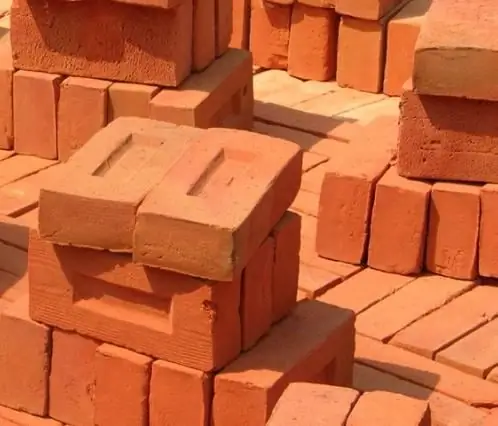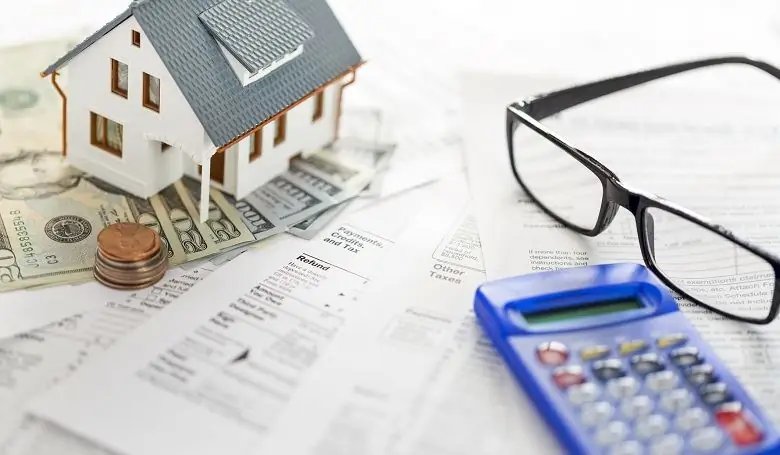2026 Author: Howard Calhoun | [email protected]. Last modified: 2025-01-24 13:10:33
Green roofing is an innovative technology that allows you to transform even the most gray building, increasing the efficiency of engineering solutions. It is noteworthy that such structures were in demand even in the Stone Age during the construction of yurts, dugouts and huts. Today, such a roof is a complex system, which should be built according to a certain technology, taking into account the design features of the building itself.
What is it made of?

Green roofing is a whole system consisting of several components:
- anti-root layer, which is laid on top of the waterproofing layer. Its task is to protect the roof from root growth;
- protective moisture-accumulating layer: it is needed to protect the waterproofing from mechanical damage and accumulate additional moisture;
- drainage-accumulation layer: its purpose is to accumulate the optimal amount of moisture, which is enough to maintain the life of planted plants and regulate the outflow of excess water;
- filter layer: with its help, water is filtered, during which fine particles of the substrate do not enter the drainage-accumulative element and protect the entire system from silting;
- soil-substrate layer,where plants are planted;
- vegetation layer, that is, directly planted plants - sedums, lawns, perennials, trees or small shrubs.
As we can see, the installation of a green roof is not easy, and therefore every little thing must be taken into account when building it.
Pros from an environmental point of view

Greening the roof today is used in many countries, including Russia. The popularity of such systems is due to their versatility: they can be built in any climate where there is a vegetative soil cover. In addition, such a decision plays an important role from an environmental point of view:
- The climate is improving. Due to the green roof, the air is humidified, as a result, natural coolness is ensured. Especially noticeable positive impact of a green roof in office space.
- The air is purified, and dust and harmful substances are absorbed: a green, exploited roof most often has a large green area, and the vegetation on the roof absorbs about 20% of dust from the air, retaining and assimilating nitrates and other toxins.
- Increases sound insulation: Vegetation on the roof improves sound insulation, which is especially important if a building with an exploitable roof is erected near airports and other buildings with high noise levels.
- Compensates part of the green spaces: as a rule, during the construction of buildings, the site is cleared of trees, shrubs, and the green roof - the ability to compensate for at least part of the plantings.
- When creating the system, recycled materials are used: the drainage system is made of rubber, polyethylene, polystyrene foam, which guarantees the environmental safety of the structure.
What does the financial aspect say?

Green roof, of course, is one of the most expensive systems, but experts say that it is still profitable to build it. Why? Let's try to figure it out:
1. The cost of reconstructing the roofing system is getting lower. The plant layer allows you to protect the roof from ultraviolet rays, temperature changes. Accordingly, landscaping significantly increases the service life of roof waterproofing up to 40 years.
2. Thermal insulation is getting better. Due to landscaping, good heat-shielding properties are provided throughout the year of operation of the roofing system, which makes it possible to reduce the cost of space heating.
3. Moisture is well retained. The effect of moisture retention is manifested in the fact that the green roof is able to retain up to 90% of moisture, which is formed due to precipitation. Some of the moisture evaporates, some is absorbed by plants, and some goes into drains. This design reduces the cost of installing pipelines and drainage systems.
Features of design and construction
Green exploitable roofs can be built in any climate zone. This is possible due to the fact that plants are used that are resistant to moisture, temperature extremes in a particular region. The landscaping system can be implemented on anyflat roof at any stage of the construction process. Green roofing is a technology for erecting a roof using bituminous or polymeric waterproofing against the roots. According to the technology, the supporting structure of the roof must be resistant to additional load. The installation of the gardening system itself is very simple and fast, and the main requirement is the maximum angle of its inclination of 25 0С.
Extensive roofing

Today it is possible to make an exploited roof of two types - extensive and intensive. Let us first consider the features of an extensive system. It involves the use of only grass cover, evenly distributed on a thin layer of soil. The rest of the plants are simply planted in separate containers with a mixture of soil. The green roof is obtained from lawn grass and drought-resistant plants, and it needs to be watered only during the period of planting growth. Maintenance of such systems involves periodic cleaning of weeds and cutting the grass. The soil mixture is a mixture of gravel, expanded clay, sand and organic matter, which are collected in a certain ratio.
Options for extensive systems
Extensive green roofing is ideal for standard roof structures. You can make the roof of the building beautiful due to different system options:
- Low-growing canopy with a substrate height of 60 mm. This is the easiest and cheapest option to use. To increase the flowering time of the cover, you can plant about 7 types of plants.
- To giveindividuality on the roof, you can plant it with drought-resistant perennials that will delight with their beauty until late autumn.
- The pitched green roof looks no less beautiful. The photo shows that such landscaping is very original. But there are nuances from a structural point of view: for any slope, you need to consider reducing the load on supports, parapets and roof overhangs, and protect the substrate from erosion. Plants should be selected according to the slope of the roof.
Intensive landscaping

Intense green roofing is a cover that combines low plants with shrubs and trees. Moreover, the planting height can reach 4 m with a fertile layer of more than 1 m and a drainage layer of more than 20 cm. In addition to the original appearance, this design serves to retain heat and prevent overheating of the internal space. The soil layer on the roof is able to smooth out temperature fluctuations, protect it from sunlight. Similar systems are being built by many companies in Moscow, for example, Green Roof LLC, which is engaged in complex roofing work of any degree of complexity.
Intensive system features
In the most standard version, the key component of an intensive roof is a special drainage membrane that removes moisture along the roof slope and retains some of it. The purpose of this membrane is to prevent plant roots from growing into the roof. This type of pitched green roof should not be filled with garden soil as it will not drain well,too heavy for a roof and has no nutritional value.

Pitched green inverted roof cannot be filled with ordinary garden soil. Ordinary soil on an inverted green roof is poorly drained, heavy enough for the roof, and not nutritious enough for plant growth. The optimal substrate for a green roof is a mixture of 60-70% medium-sized brick chips, perlite, vermiculite or expanded clay and 40-30% good compost.
How to choose a substrate?
In addition to the Green Roof company (Moscow), many companies offer greening services for flat and pitched roofs. And it is very important that the substrate formulation is correctly selected. It is based on compost, old leaves, wood feed in small and large pieces, perlite, expanded clay, coconut fiber. The thickness of the substrate must be 40 mm, not less, and if the roof is inverted, then the thickness must be at least 80 mm.

Green roof vegetative cover is based on high altitude alpine sedum plants, mosses, wild flowers and turf grass (or roll lawns). Moreover, whole plant compositions can be created on the roof surface.
Recommended:
Silicate industry - and the house, and the roof, and dishes

Like mushrooms after the rain, grandiose skyscrapers began to grow in many cities of the world, which are bright design solutions that organically combine concrete and glass. It is the building materials that are so in demand at the present time that the silicate industry produces
Types of taxes and tax benefits: concept, classification and conditions for obtaining

In a broad sense, taxes also include duties and fees, that is, obligatory payments by firms and households to the state for granting permits, rights and performing other legally significant actions (for example, licensing, customs, fees, state fees for notarial actions, for consideration of cases in courts, registration of acts of civil status, etc.)
Benefits when buying an apartment: types of benefits, government assistance, tax calculation and legal advice

The statistics in our country are disappointing: every second Russian has problems with housing. Some people save half their lives, others take out mortgages, others get in line for social programs. But people in any category will not forego benefits at the time of the transaction because they want to save money. So what are benefits and who do they apply to?
Mustard is turning green like green manure - an excellent harvest will ripen

Dung as a fertilizer used in agricultural technology continues to lose its supporters among farmers. The reason for this is the inaccessibility, significant labor intensity and high price, as well as the inevitability of exhausting weeding and the use of herbicides due to contamination with weed seeds. A serious alternative to manure is green manure, one of the representatives of which is white mustard
When to plant green manure for the garden? The best green manure for the garden

Our ancestors knew that the soil could not be left open for a long time. The folk proverb "Dig in oats and rye - you will take a big harvest" exists not without reason. Experienced farmers are well aware that the soil left “naked” even for just a few weeks begins to change its structure for the worse and becomes depleted

